I’ve seen a lot of cracked concrete on driveways, patios, and garage floors.
It’s a common problem, and if you’re reading this, you’re likely trying to figure out why it happens and what you can do about it.
In this article, I’ll walk you through the real reasons for concrete cracks. I’ll keep things straightforward, so you don’t need to be an expert to understand.
My goal is to help you solve the issue, not make it more confusing. You can trust that everything here is written with care and honesty.
By the end, you’ll know what causes these cracks, how to spot them early, and what steps you can take to keep your concrete in better shape.
What Is Concrete?
Concrete is a mix of cement, water, sand, and gravel. When these materials are combined, they form a thick paste that can be molded into any shape as needed.
Over time, this mixture hardens and becomes solid. Once it sets, concrete is a strong and long-lasting material.
It’s used to build things like sidewalks, roads, driveways, and buildings.
Because it can withstand a significant amount of weight and weather, concrete is one of the most common building materials in the world.
Types of Concrete Cracks
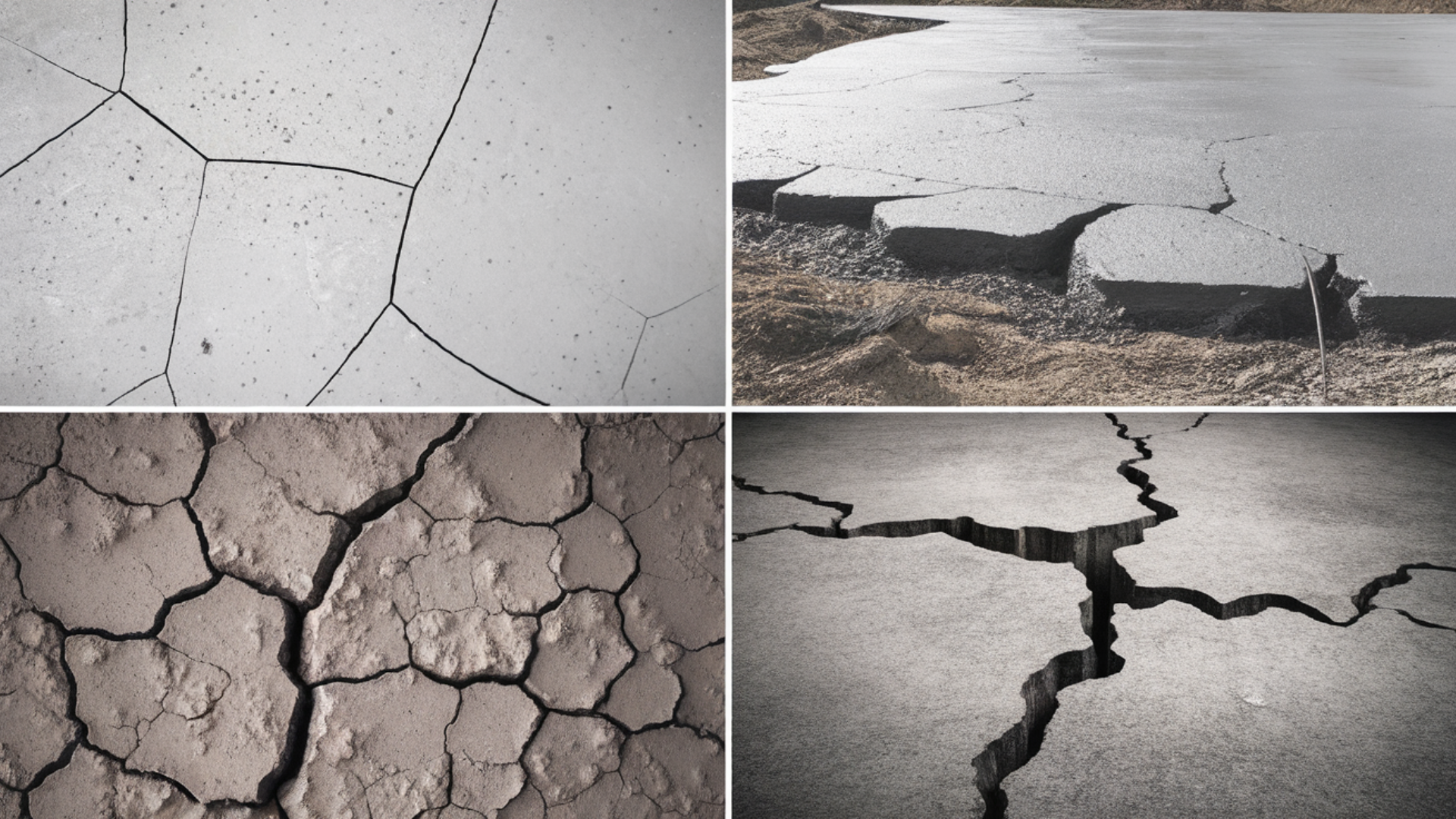
Not all concrete cracks are the same. Some are small and harmless, while others can indicate more significant issues. The most common types of concrete cracks, their causes, and why they matter are:
- Hairline Cracks: These are fragile and shallow in nature. They often appear on the surface and usually don’t affect the strength of the concrete. These cracks are primarily cosmetic and can be left alone unless they start to grow or spread.
- Shrinkage Cracks: It happens as the concrete dries and loses moisture. As it shrinks, small cracks may appear, especially on large flat surfaces. These often show up within the first few days after pouring and are usually not serious.
- Settlement Cracks: These cracks form when the ground beneath the concrete shifts or settles. This can happen if the soil wasn’t packed properly. These cracks are often broader and deeper, and they may lead to uneven surfaces.
- Structural Cracks: Heavy loads, poor design, or weak support cause structural cracks. These cracks can run deep and affect the safety of the slab or structure.
Common Reasons Why Concrete Cracks Over Time
Concrete is known for being strong and durable, but that doesn’t mean it’s perfect. One of the most common problems with concrete is cracking. By learning why they happen, you can take steps to prevent them in your driveway, patio, or floor.
1. Plastic Shrinkage

Plastic shrinkage cracks form when concrete is still wet and hasn’t hardened yet. Right after it’s poured, concrete contains a lot of water.
If the weather is hot, dry, or windy, the water on the surface can evaporate too quickly. This makes the surface pull apart before the bottom has set.
The result is thin, short cracks that look like spiderwebs or shattered glass.
These cracks typically don’t extend deeply, but they can impact the appearance and durability of the surface.
2. Drying Shrinkage

Even after concrete hardens, it continues to lose moisture for weeks. As this water leaves, the concrete begins to shrink.
But concrete isn’t flexible like rubber. It can’t stretch to handle the shrinkage, so it cracks instead.
These cracks can appear randomly and often show up in sidewalks, slabs, or patios.
The more water used in the mix, the greater the shrinkage will be. That’s why careful water control is important during the mixing stage.
3. Thermal Expansion and Contraction
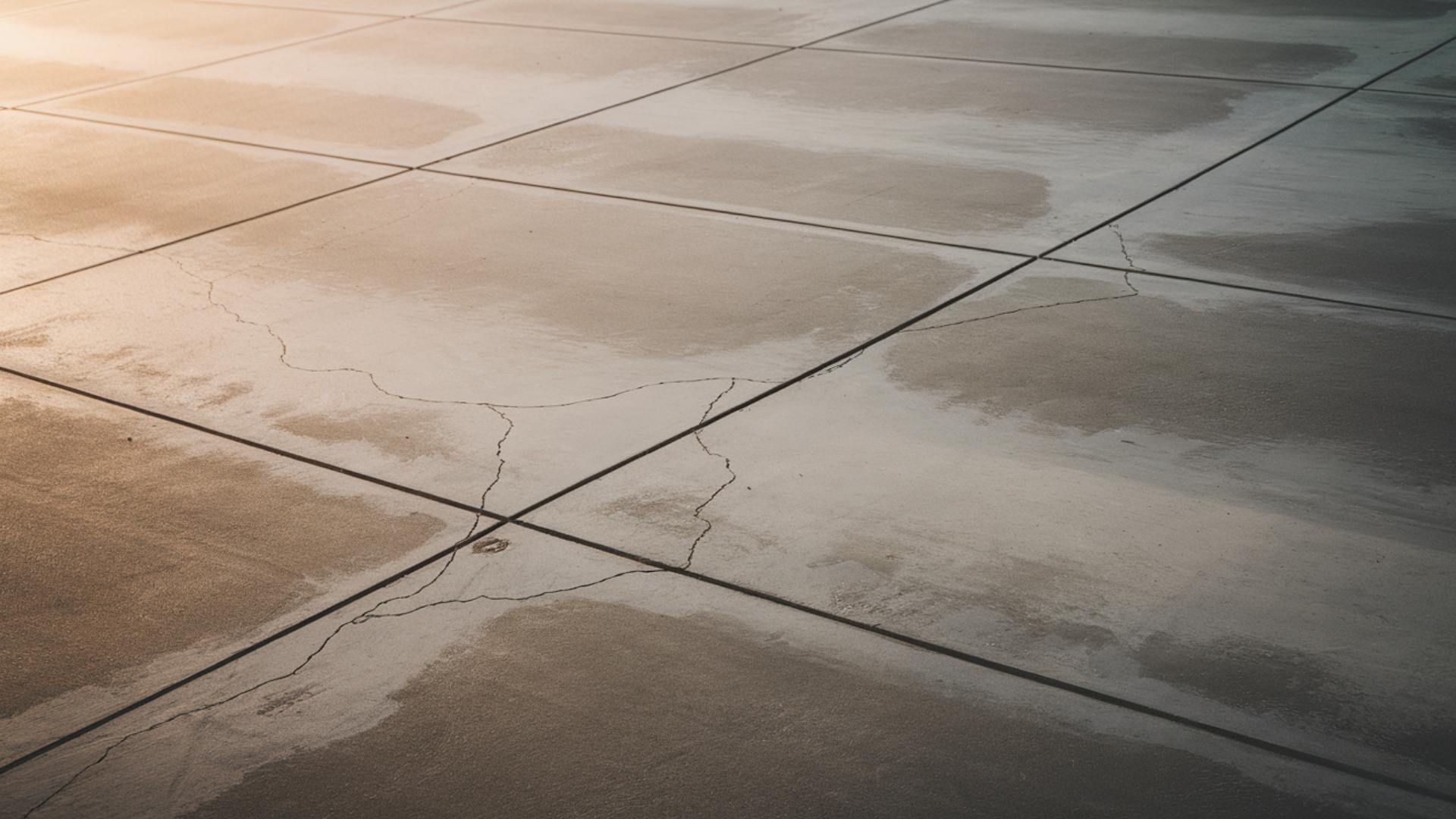
Concrete expands in heat and contracts in cold.
This movement may seem small, but over time, it builds stress if there is no space to absorb the pressure, and the concrete cracks.
Driveways, sidewalks, and exterior slabs are particularly susceptible to this because they are exposed to sunlight and weather.
That’s why builders use expansion joints or space between slabs to give the concrete room to move safely without cracking.
4. Freeze-Thaw Damage
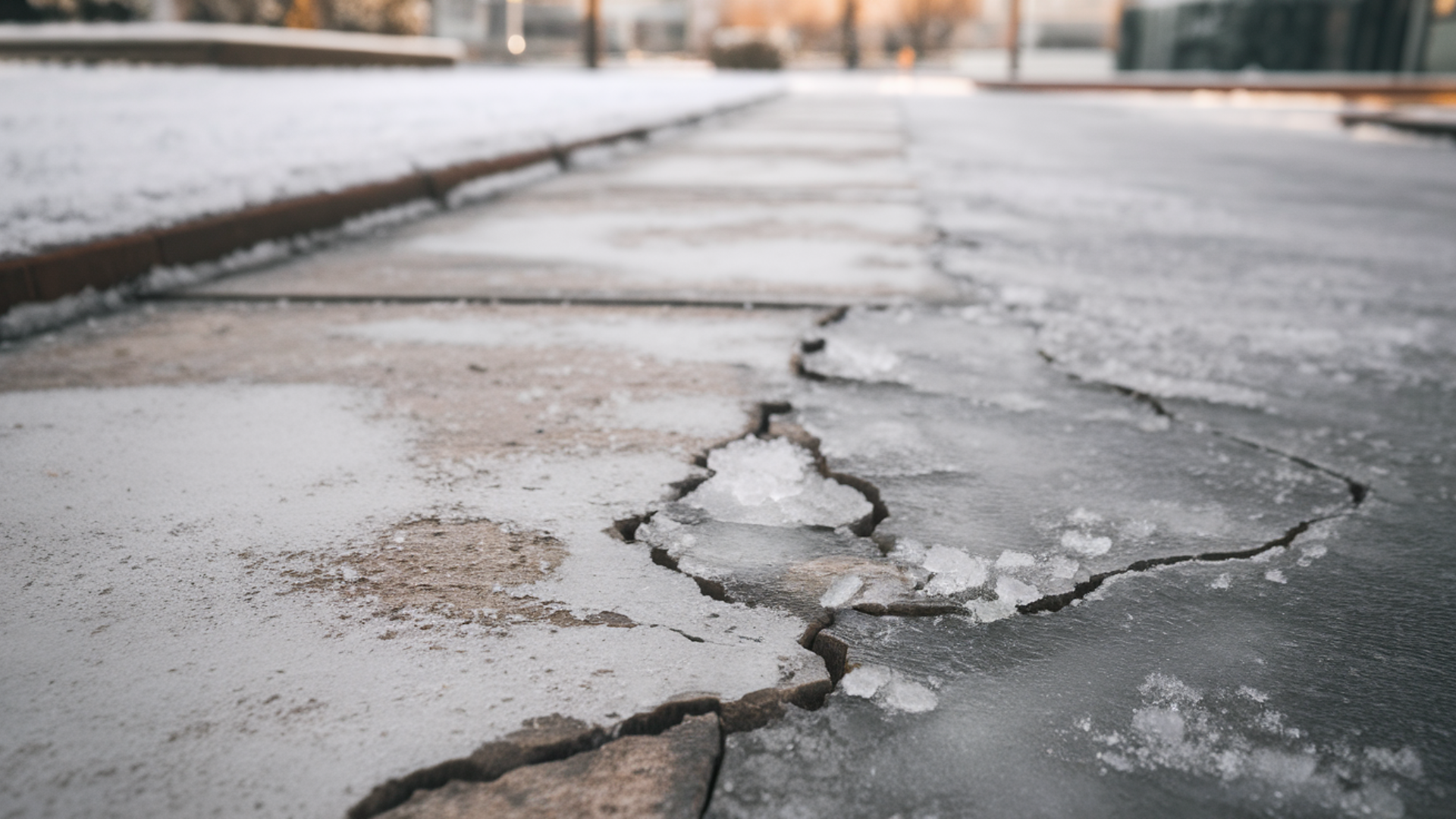
In cold climates, concrete often absorbs water through tiny surface pores. When temperatures drop below freezing, that trapped water turns into ice.
Ice takes up more space than water, so it pushes outward inside the concrete. Each freeze-thaw cycle adds more pressure.
Over time, this causes chunks of the surface to flake off, crack, or pop. This type of damage is common in outdoor concrete that has not been sealed properly.
5. Poor Subgrade Preparation
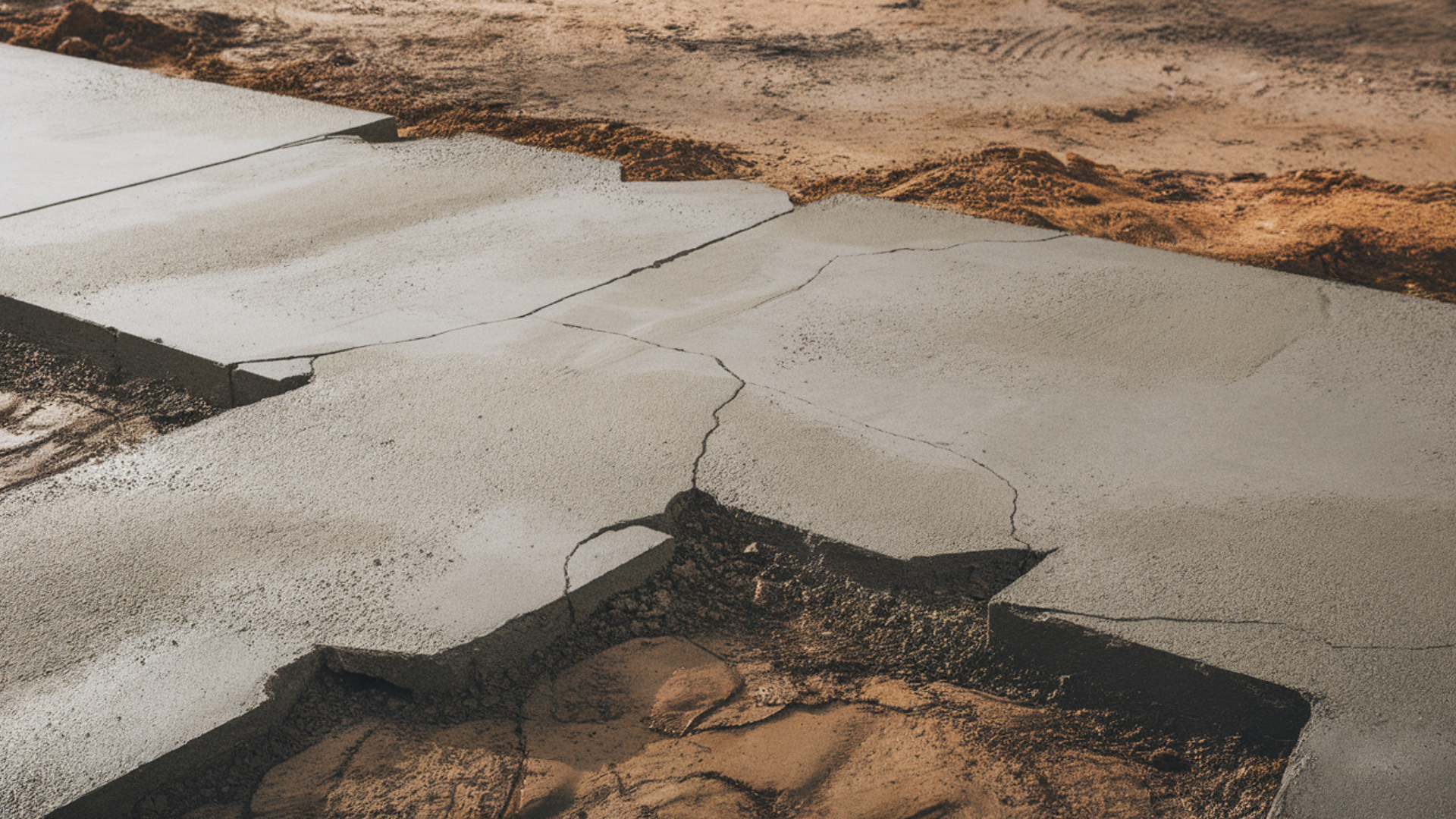
Before concrete is poured, the ground underneath must be prepared. This layer is called the subgrade.
If the subgrade is soft, uneven, wet, or not compacted well, it can shift or settle after the concrete hardens. When the ground sinks, the slab above it loses support.
This causes uneven cracks, dips, or broken corners. A strong, level base is one of the most important steps in preventing future damage.
6. Overloading
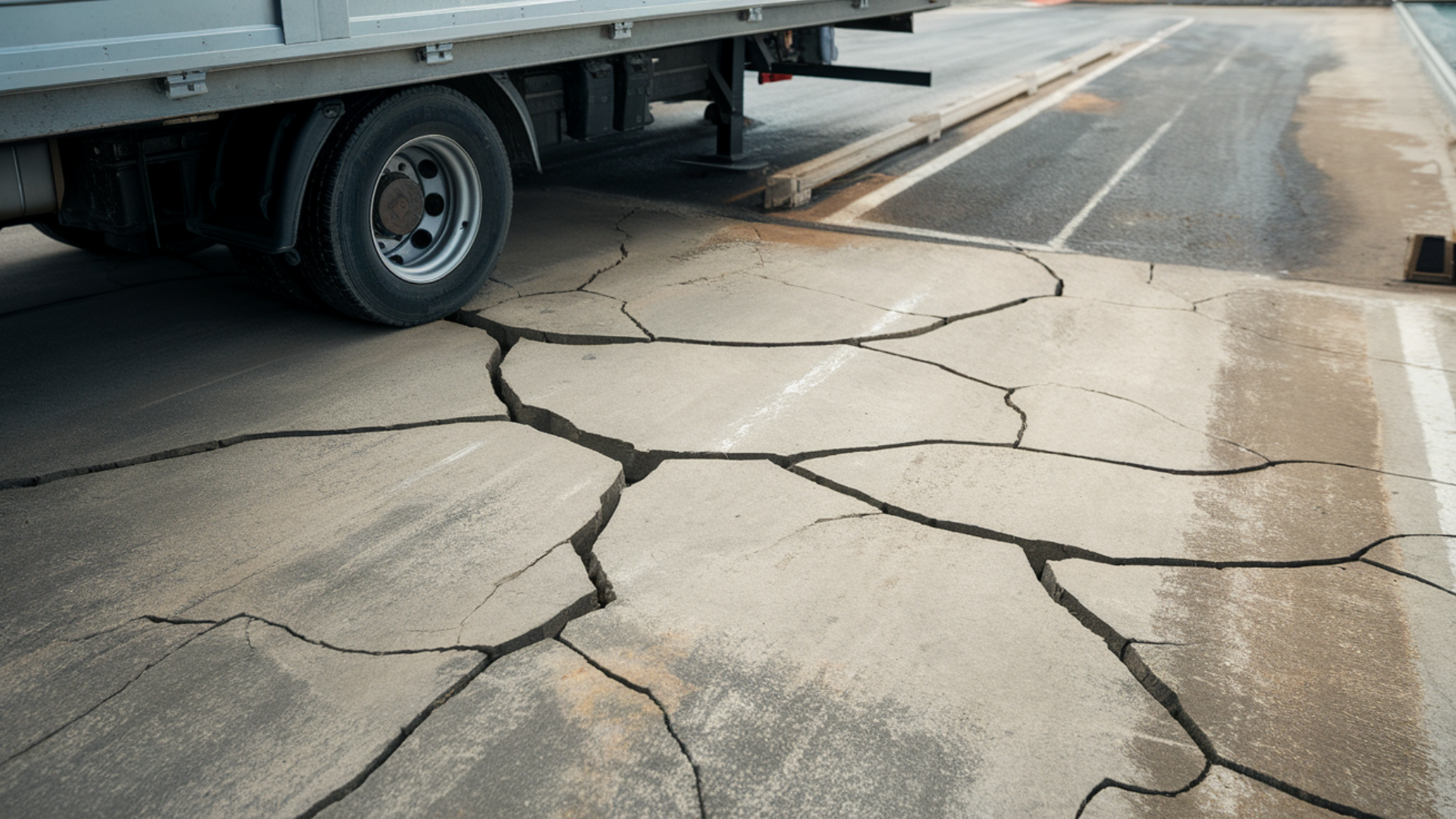
Concrete is tough, but it has its limits. If you put too much weight on it, like a heavy truck, storage container, or hot tub, the slab can’t handle the stress.
The pressure creates tension in the middle or edges of the slab, and cracks start to form.
This is especially a problem if the concrete is thin or wasn’t designed for heavy use.
Commercial driveways and loading zones need thicker, stronger concrete to prevent this issue.
7. Lack of Control Joints
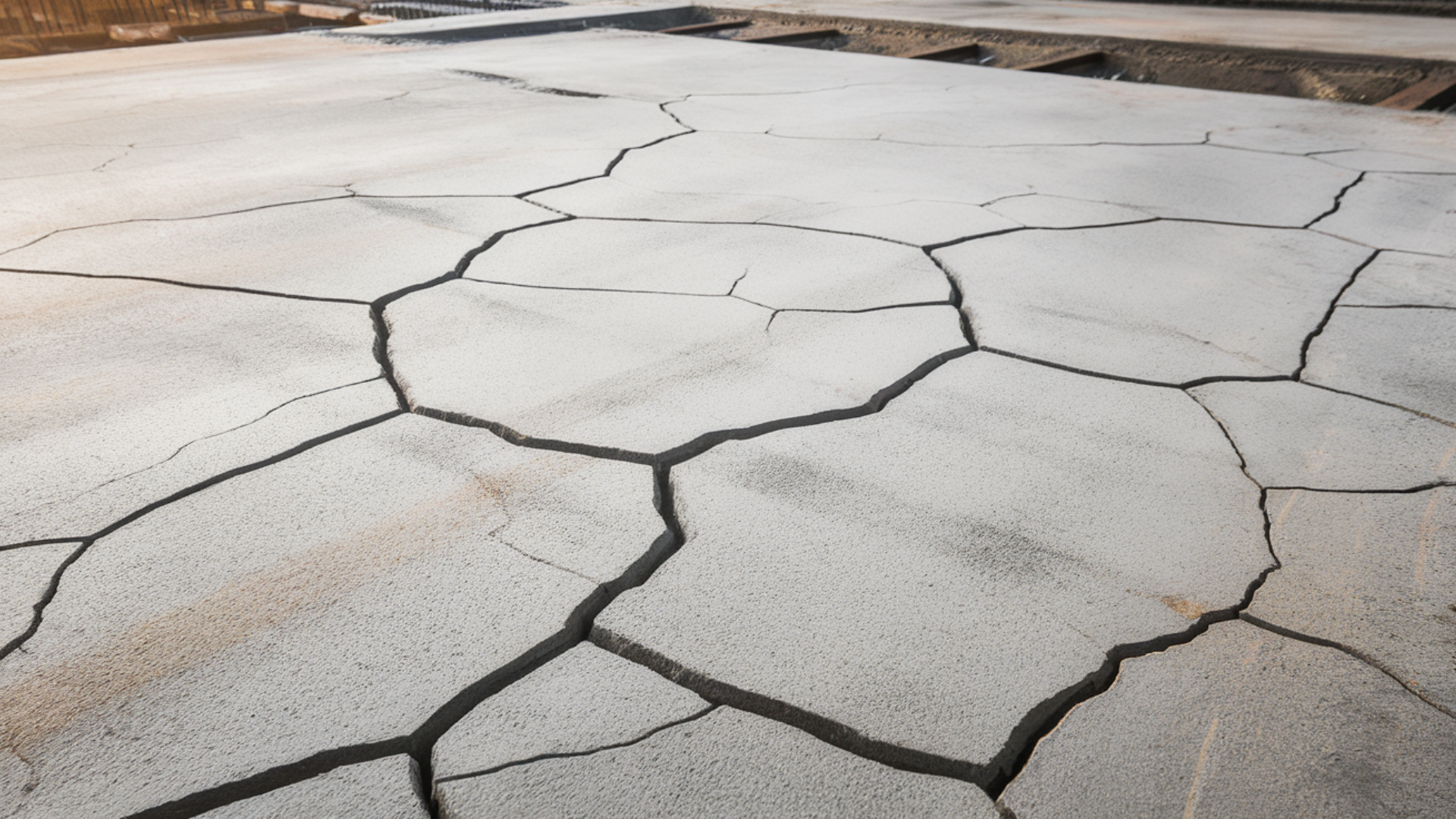
Concrete needs weak spots where it can crack safely. These are called control joints. If you skip this step, the concrete has no guidance on where to crack.
So it cracks wherever it wants, often in ugly or damaging places. Control joints are usually grooves cut into the surface.
They should be placed soon after the concrete is poured and spaced correctly, depending on the slab size. Skipping them is a common cause of random cracking.
8. Corrosion of Reinforcement

Many concrete structures include steel bars (rebar) for extra strength. But if moisture or salt gets in through cracks or unsealed surfaces, it can reach the rebar and cause rust.
When steel rusts, it expands. That swelling puts pressure on the surrounding concrete, causing large, deep cracks.
This is common in bridges, parking garages, and coastal areas. Once this process begins, the concrete can deteriorate quickly unless it is repaired.
9. Alkali-Silica Reaction (ASR)
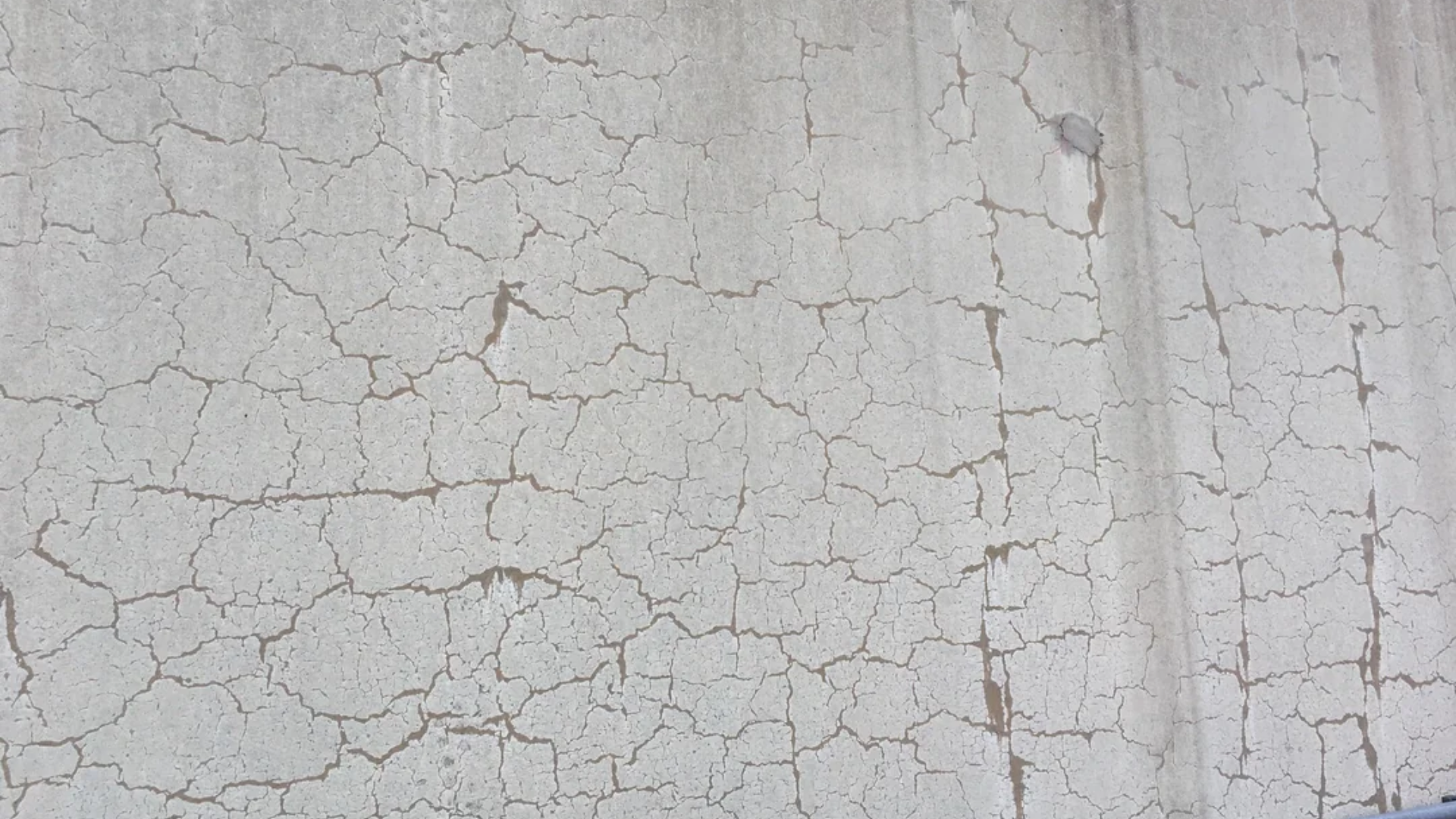
ASR is a slow chemical reaction between the cement and certain types of stone used in the concrete mix. This reaction forms a gel that absorbs water and expands.
Over time, the expansion creates internal pressure that causes cracking and bulging. This type of damage typically appears years after the concrete was poured.
It can look like a map of random, deep cracks across a surface. Special materials can be used during construction to prevent this.
10. Poor Finishing Practices

How concrete is finished matters a lot. If workers add too much water to the surface or overwork it with tools, it weakens the top layer.
This layer may look smooth at first, but it is soft and brittle. Over time, foot traffic, rain, or even light use can cause this surface to crack or peel.
Finishing should be done carefully and at the right time, neither too early nor with too much water.
11. Poor Curing Practices
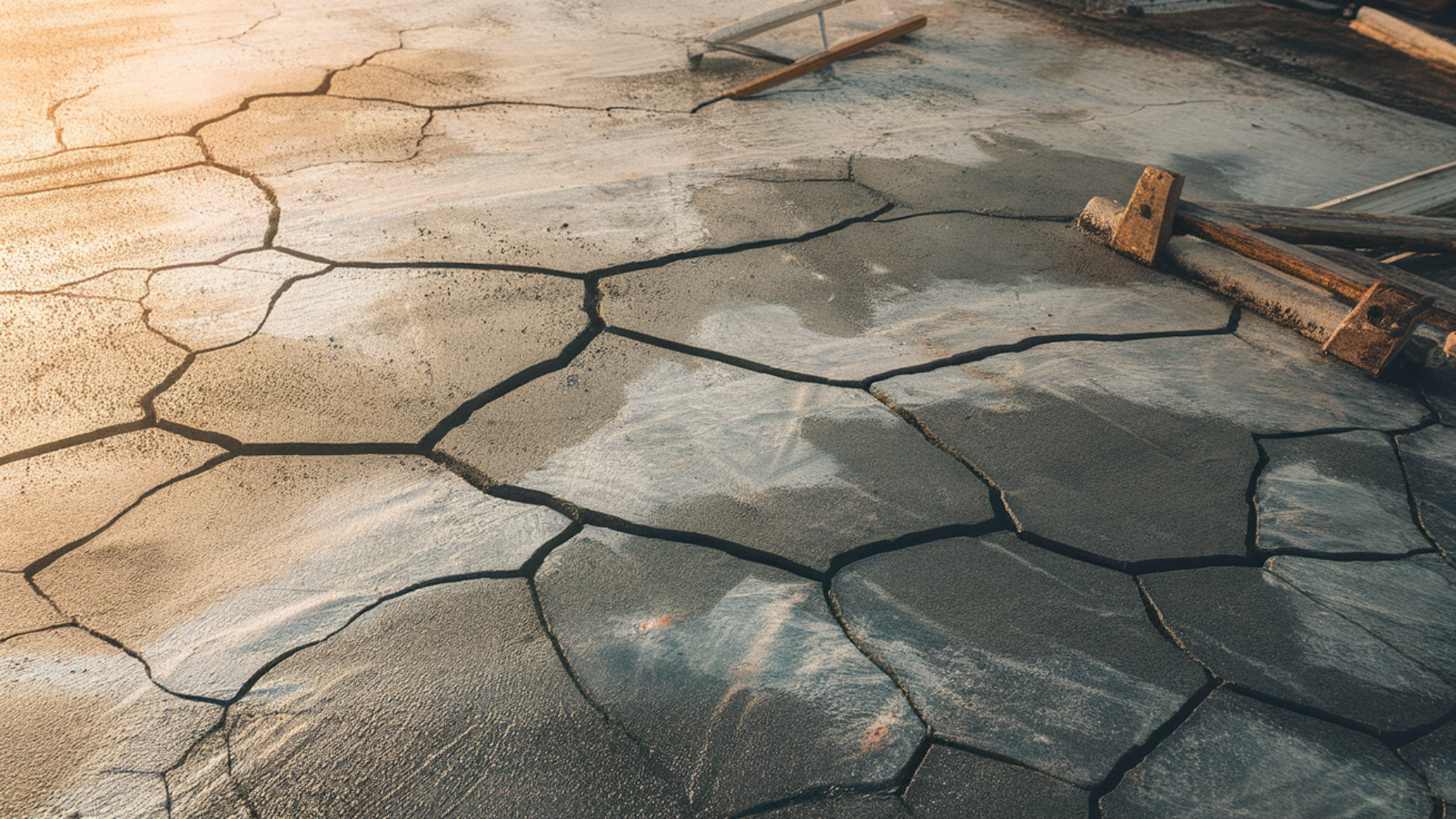
Curing is the process of maintaining concrete at the right temperature and moisture level while it hardens.
If this step is skipped or done too quickly, the concrete loses moisture too fast.
This can cause it to dry out unevenly, remain weak, or shrink excessively. All of these problems lead to cracks. Curing usually takes at least 7 days.
Covering the concrete with plastic or spraying it with water can help slow the drying and protect its strength.
12. Tree Roots and External Pressure
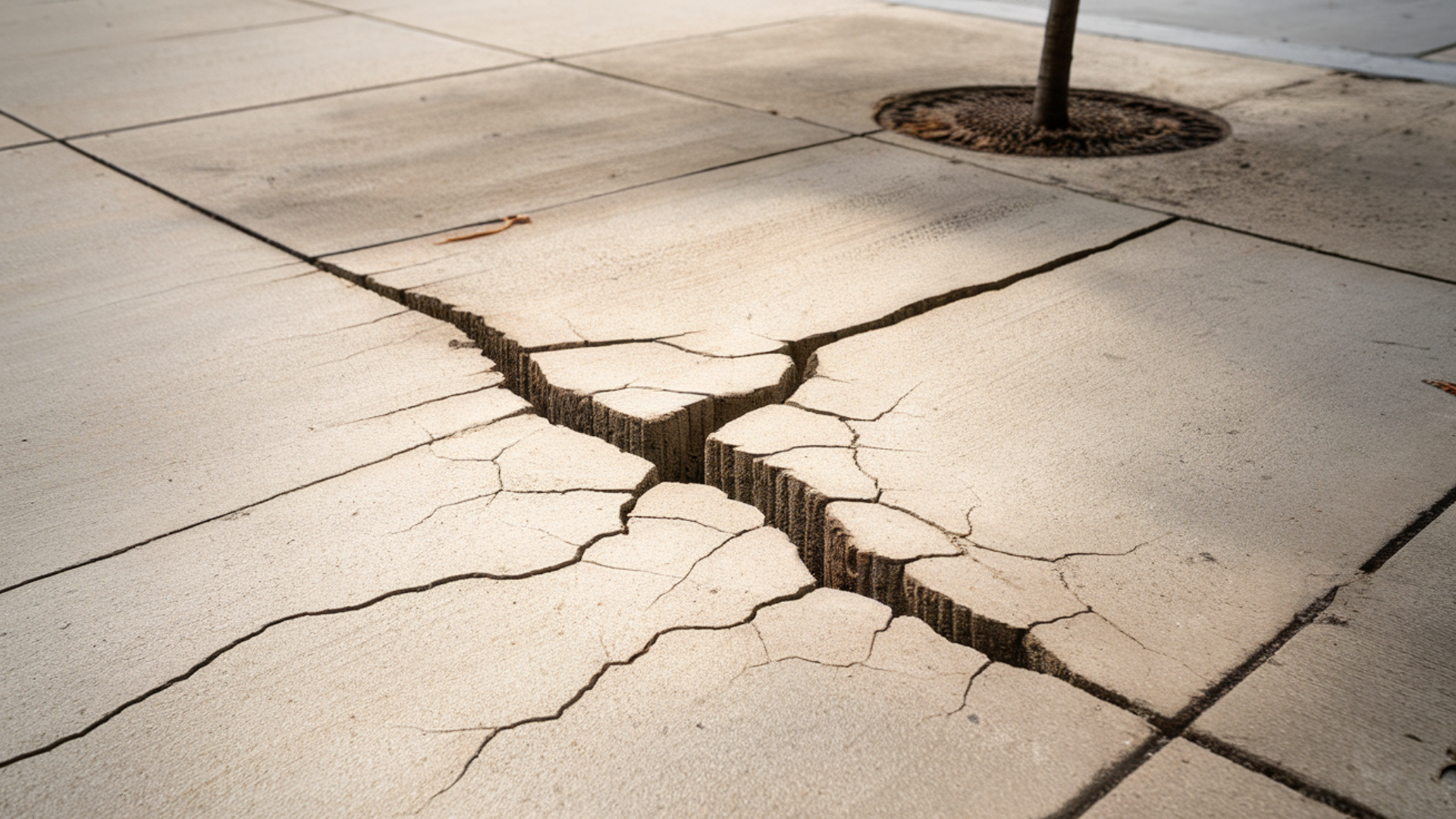
Tree roots may seem harmless, but they can cause major problems. As roots grow, they can push up under concrete slabs, lifting them and creating cracks.
Other outside forces, like ground movement, broken water lines, or nearby construction, can also put pressure on concrete.
This uneven force causes slabs to crack, tilt, or even break apart.
To avoid this, trees should be planted a safe distance from concrete, and underground systems should be thoroughly checked before pouring.
Preventing Concrete Cracks
Cracks in concrete might seem unavoidable, but many can be prevented with a few smart steps. In this section, you’ll learn simple ways to help stop cracks from forming in the first place.
- Use Proper Mix: The right concrete mix is the first step in avoiding cracks. Too much water makes the mix weak and more likely to shrink as it dries.
- Control Joints: Control joints are planned weak spots that guide where cracks will happen. Instead of cracking randomly, the concrete cracks along these joints in a neat, patterned manner.
- Proper Curing: Curing is the process of keeping concrete moist while it hardens. If it dries too fast, it can crack. Keeping it damp for at least a week helps it gain strength slowly and evenly.
- Good Base: The ground beneath the concrete needs to be strong and level. If it’s loose, soft, or uneven, the concrete may settle or shift after it has been poured.
- Seal Concrete: Sealing the concrete helps protect it from moisture, salt, and other corrosive substances. These can enter through small pores and cause damage over time.
Conclusion
Cracks in concrete are a common problem, but they don’t have to be a mystery.
Most cracks occur for specific reasons, such as poor mixing, ground movement, or weather changes.
The good news is that many of these issues can be prevented with the right steps.
By understanding what causes cracks and recognizing the warning signs, you can take action early and prevent more significant problems later.
Simple choices, like using the right mix, adding control joints, curing properly, and sealing the surface, go a long way in protecting your concrete.
Regular maintenance also helps your concrete last longer and stay in good shape.
With the right approach, you can minimize cracks and keep your concrete strong for years to come.

